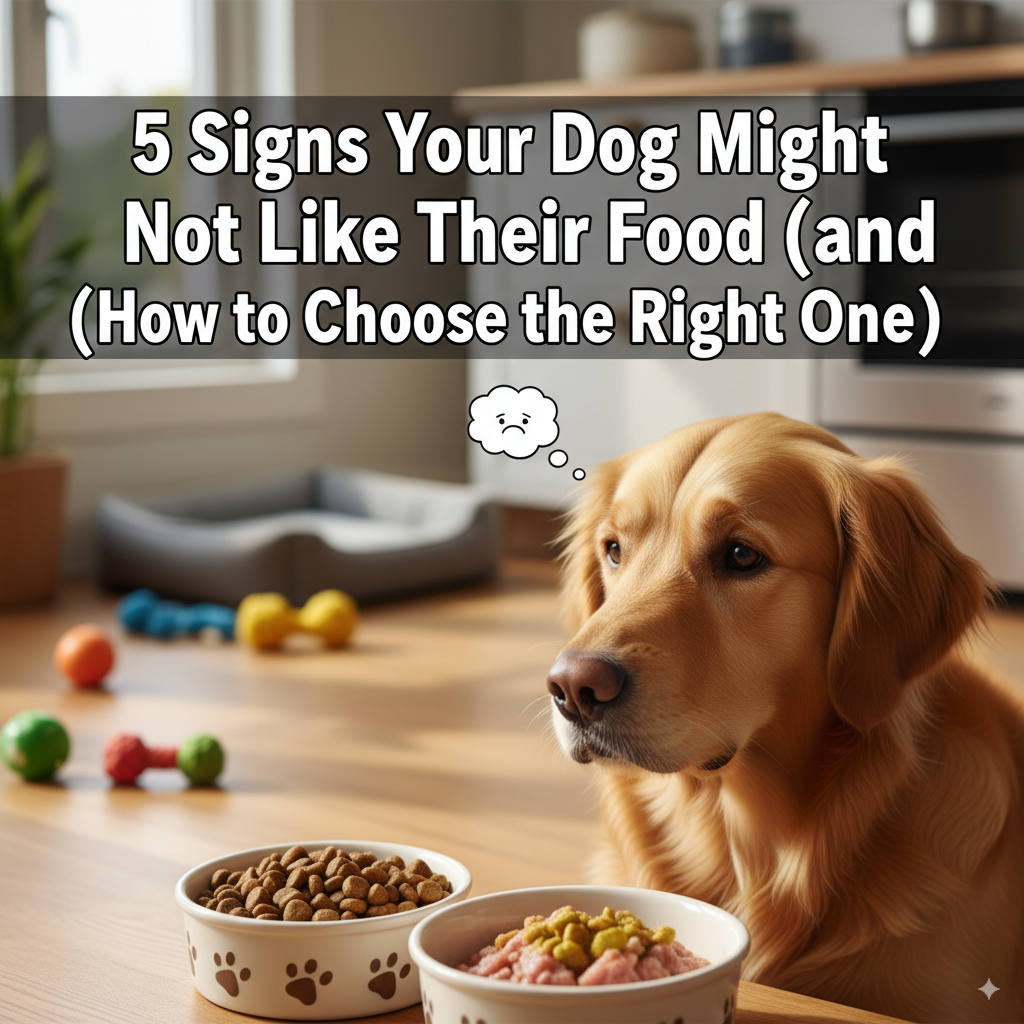As dog owners, we want to see our pups clean their bowls with enthusiasm. But sometimes, what we think is best isn’t what’s working for their bodies. If your dog is showing subtle signs of discomfort or disinterest at mealtime, it might be time to reassess their food.
Here are five common signs that your dog’s current food might not be the right fit:
1. Picky Eating or Low Appetite: While some dogs are naturally fussy, a sudden loss of interest in food is a red flag. If your dog frequently sniffs their bowl and walks away, they might be telling you they don’t like the taste or that it doesn’t make them feel good.
2. Digestive Issues: This is one of the most obvious signs. Frequent gas, loose stools, or constipation indicates that their digestive system is struggling to process the ingredients. A high-quality food should result in firm, consistent stools.
3. Dull Coat and Itchy Skin: A dog’s skin and coat are direct reflections of their nutrition. If their coat is brittle and lacks shine, or if they are constantly scratching and licking, they may be suffering from allergies or a deficiency in essential fatty acids (like Omega-3 and Omega-6).
4. Low Energy Levels: Healthy dogs should be active and alert. If your pup seems unusually tired, lethargic, or uninterested in playtime, their diet could be the culprit. Food is fuel, and the wrong kind won’t provide the energy they need to thrive.
5. Bad Breath and Dental Problems: Persistent bad breath (beyond the typical “doggy breath”) can be a sign of poor digestion or dental issues exacerbated by low-quality food. Good dog food helps promote dental health through chewing action and balanced ingredients.
How to Choose the Right Food:
-
Read the Label: Look for a named meat source (like chicken, beef, or lamb) as the first ingredient. Avoid generic terms like “meat meal.”
-
Avoid Fillers: Corn, wheat, and soy are common fillers that can cause allergies and offer little nutritional value.
-
Consider Your Dog’s Needs: A puppy, a senior dog, and a high-energy adult dog all have different nutritional requirements. Choose a formula that’s appropriate for their age, breed, and activity level.
-
Transition Slowly: When switching to a new food, do it gradually over 7-10 days by mixing the new food with the old, slowly increasing the ratio to avoid digestive upset.
By paying attention to these signs, you can ensure your furry friend is getting the nutrition they need to live a happy, healthy, and energetic life.
